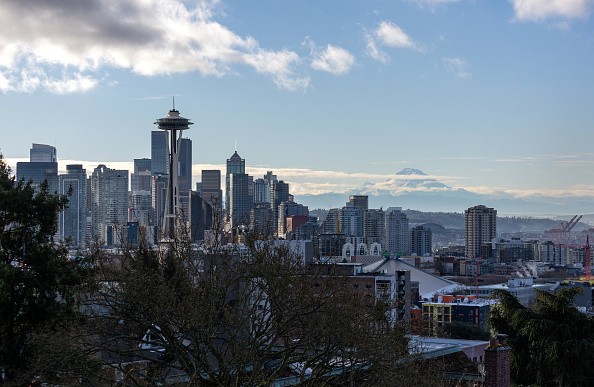A large cascade Mount Rainier is considered a dangerous volcano in the United States, according to the United States Geological Survey (USGS). It is even though Mount Rainier has not produced any disastrous eruption in the past 500 years.
Mount Rainier shows its magnificence and beauty from a distance, ascending 14,410 feet above sea level. The National Park Service said it is an icon of the horizon and the most glaciated peak in the United States
However, a video showing a white plume over Mount Rainier alarmed social media users about a rumor of a potential eruption. The National Park Service dispelled the rumors that Mount Rainier was not erupting and that it was only a lenticular cloud. There was also no unusual seismic activity in the volcano.
Mount Rainier is NOT erupting. We have looked at the cloud that has caused concern from multiple webcams and have determined that it is a lenticular cloud. In addition, the USGS reports no indications of unusual seismic activity. ~pw
— MountRainierNPS (@MountRainierNPS) September 7, 2022
While other volcanos such as Mount St. Helens could be more likely to erupt than Mount Rainier, the latter poses a major and devastating threat with lahars flowing from it.
The USGS said Mount Rainer, the volcano's height and glacier ice, could cause debris flows or lahars. The debris flows with mud and rock, which can develop from large masses of weak water-saturated rock. The lahars from Rainier could be super-devastating to nearby communities.
In 1985, the destructive power of volcanic mud occurred in one of the Nevado del Ruiz stratovolcanos. It hit the town of Armero, causing thousands of deaths.
A huge concern

Although Mount Rainier is considered a dangerous volcano, the rivers surrounding Rainier have dams that could be used to contain lahars. As a result, the possible disastrous damage could be reduced.
In an article, National Geographic explained that Mount Rainier is a genuine concern. It added that it is still unclear when it will wake up from its long sleep as there is no sign of danger. Its eruption could cause a natural disaster in the U.S.
An expert and volcanologist at Concord University Janine Krippner said to National Geographic that Rainier is a huge concern as the most dangerous volcano.
Monitoring

The USGS explained on its website that there are 161 potential volcanoes in the United States, and 57 of them are considered a high threat. It added that volcanoes show warnings for a possible eruption, such as the rise of magma toward the surface or anomalous heat or flow temperature.
Moreover, USGS said that such giant debris formed during an eruption could melt the glacier ice from Mount Rainier. The debris can go with the flow and flood the southern Puget Sound lowland, which could travel as less as 30 minutes to a few hours.
Unlike Mount Rainier, Mount St. Helens is a more active volcano. On May 18, 1980, the USGS reported that Helens produced about 540 million tons of ash. It had over nine hours of eruptive activity.
It is still unknown when Mount Rainier could erupt from its deep slumber. However, authorities are monitoring all earthquake activities for potential eruptions.
Also Read: Force from Tonga's Eruption Could Have Created Mutliple Tsunamis the Size of the Statue of Liberty
Did this article help you? Share this on your social media.
For more similar stories, don't forget to follow Nature News
© 2025 NatureWorldNews.com All rights reserved. Do not reproduce without permission.





